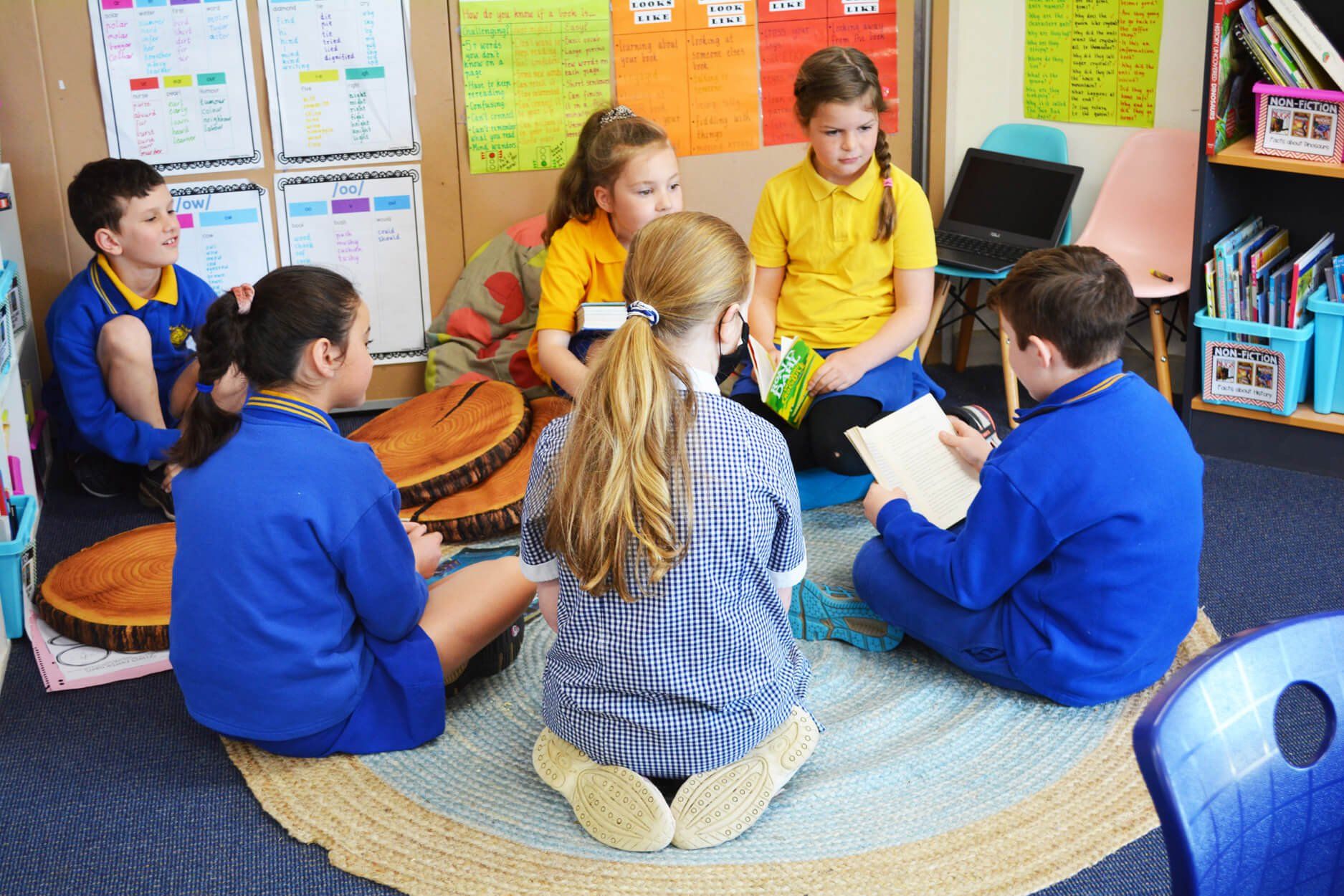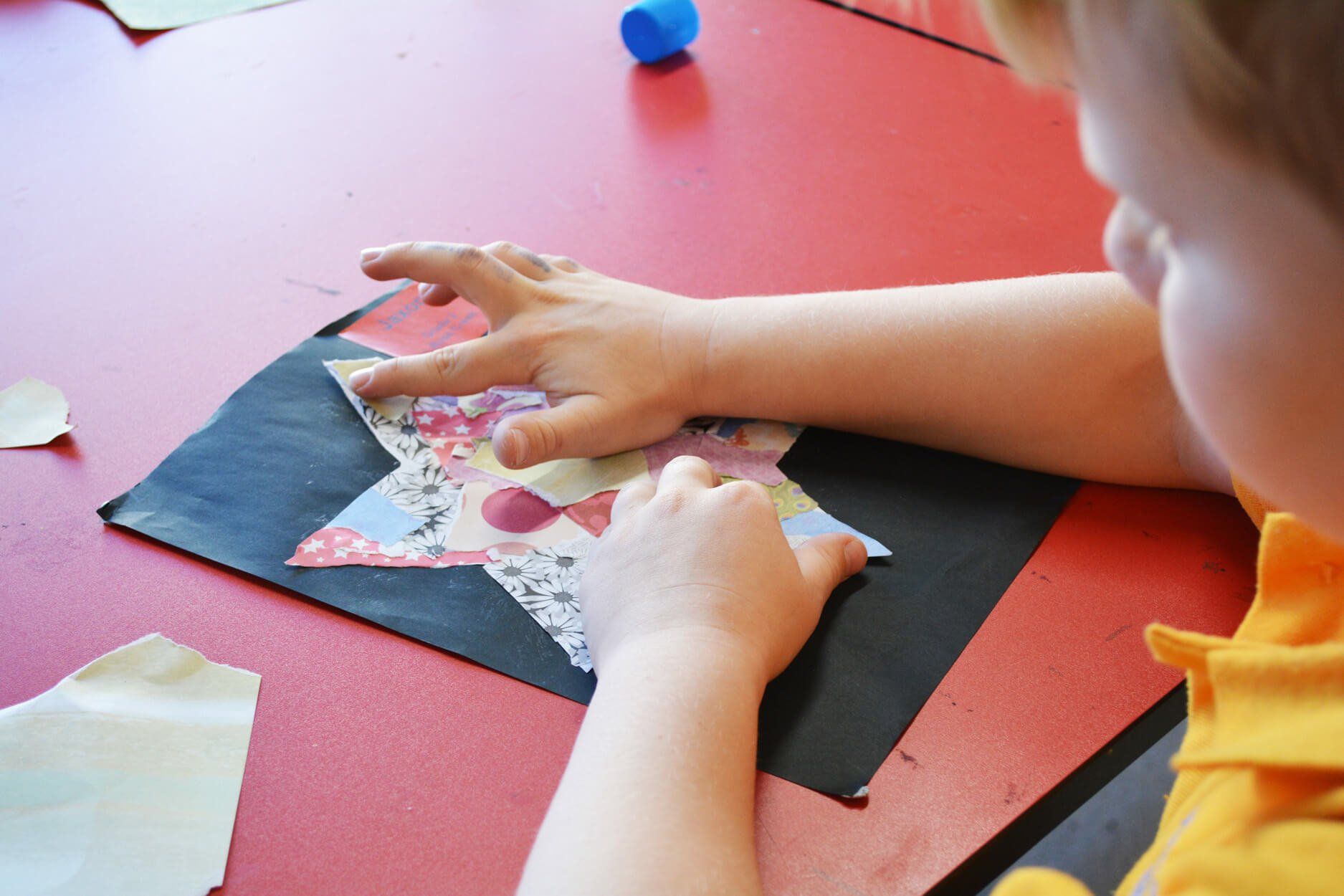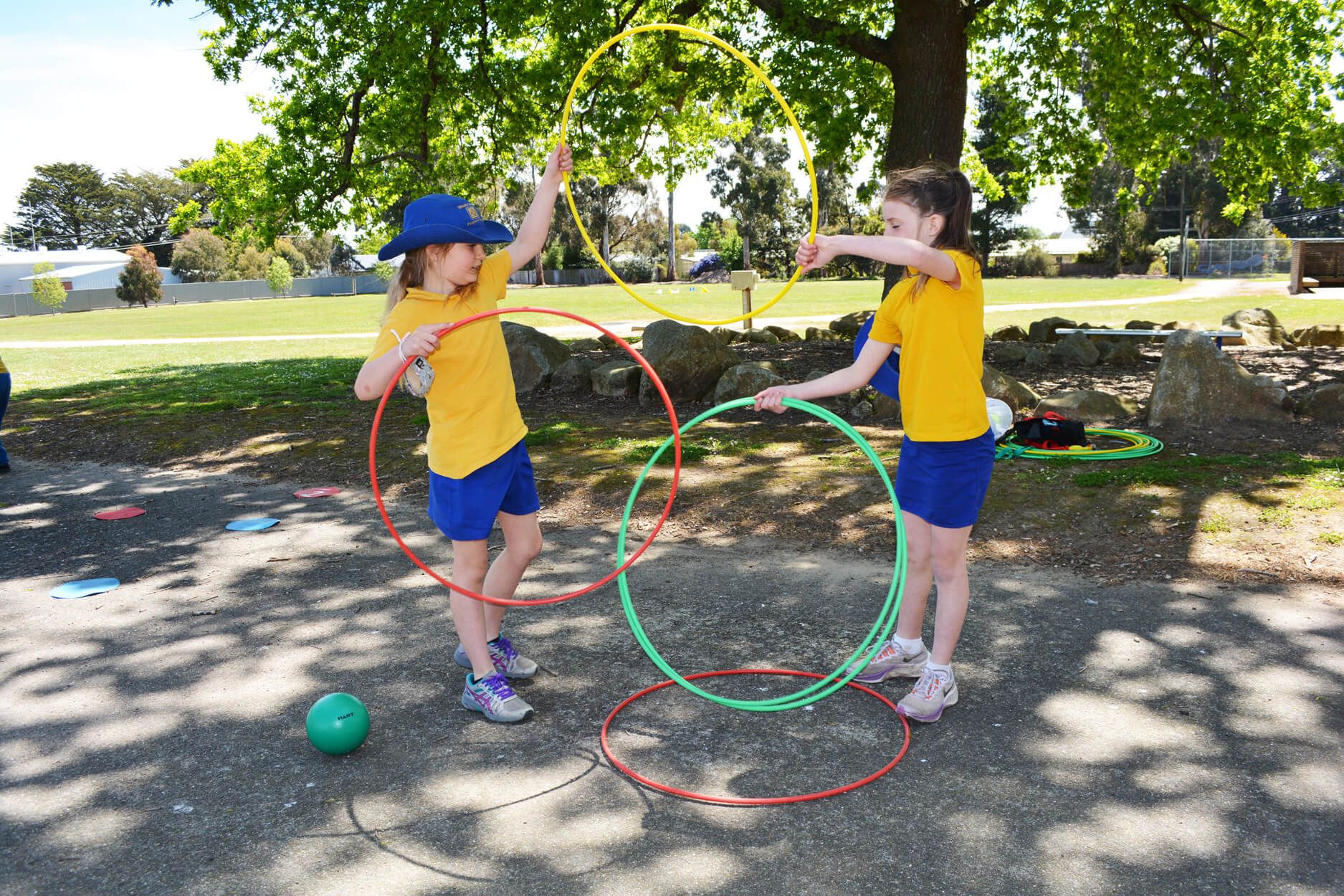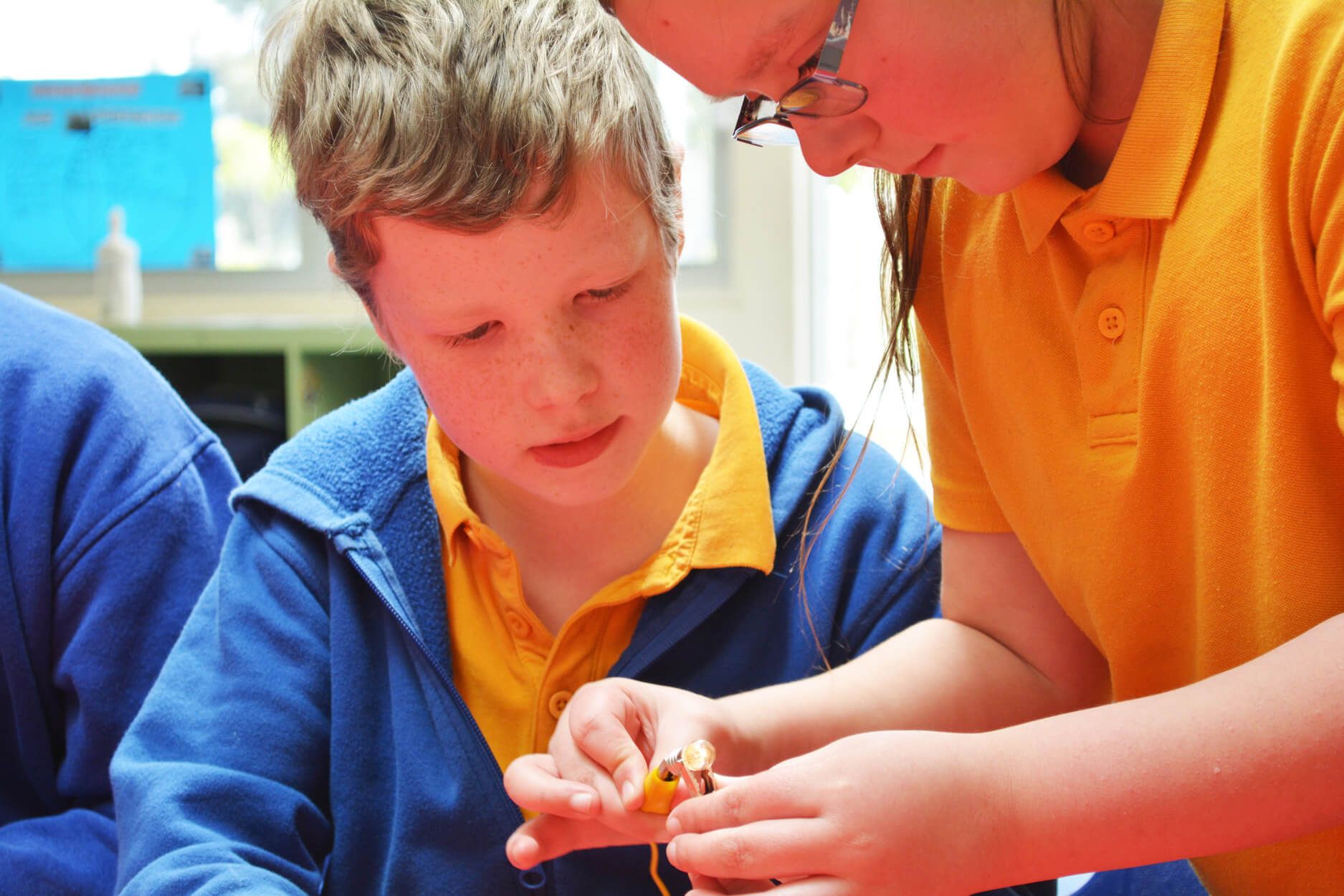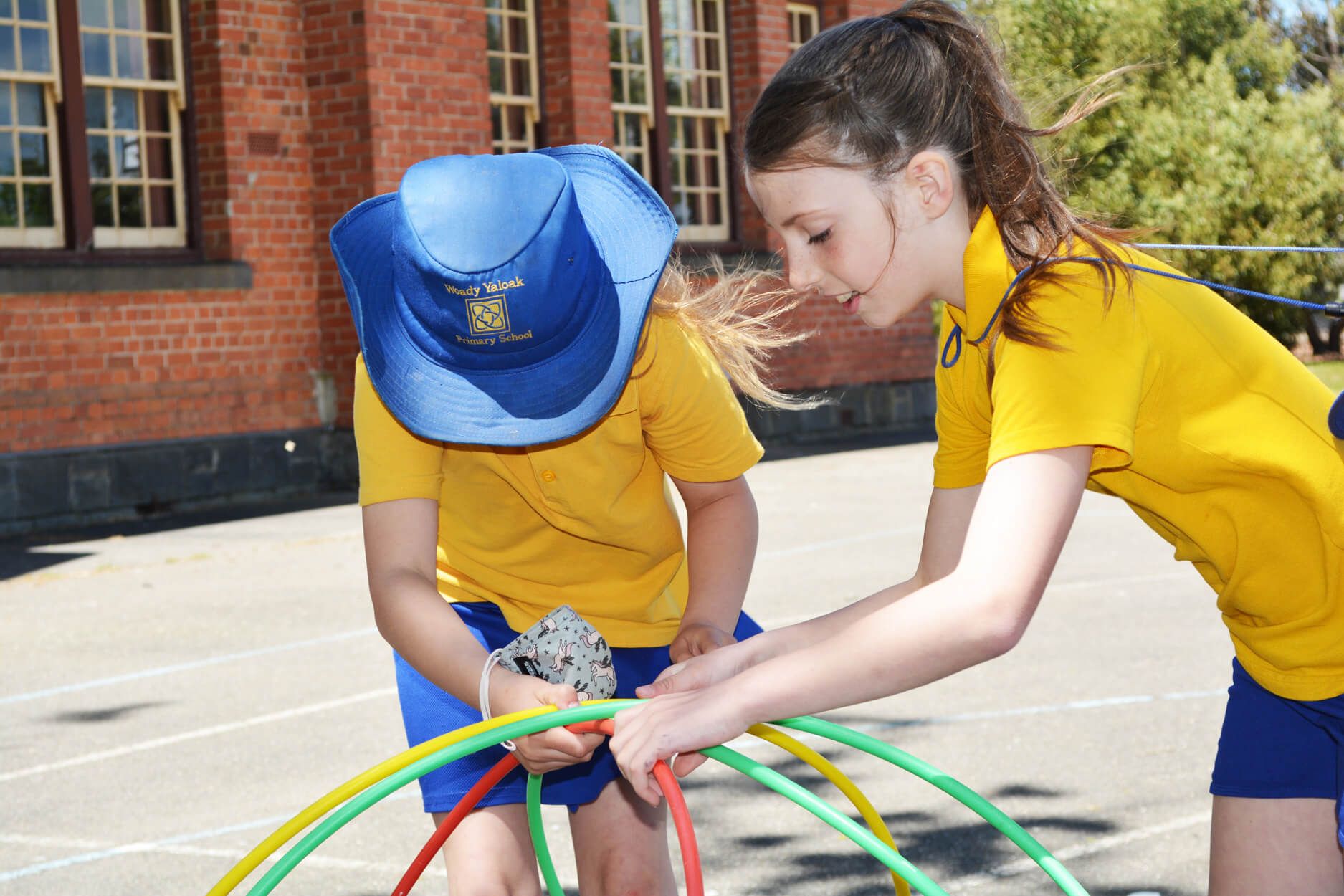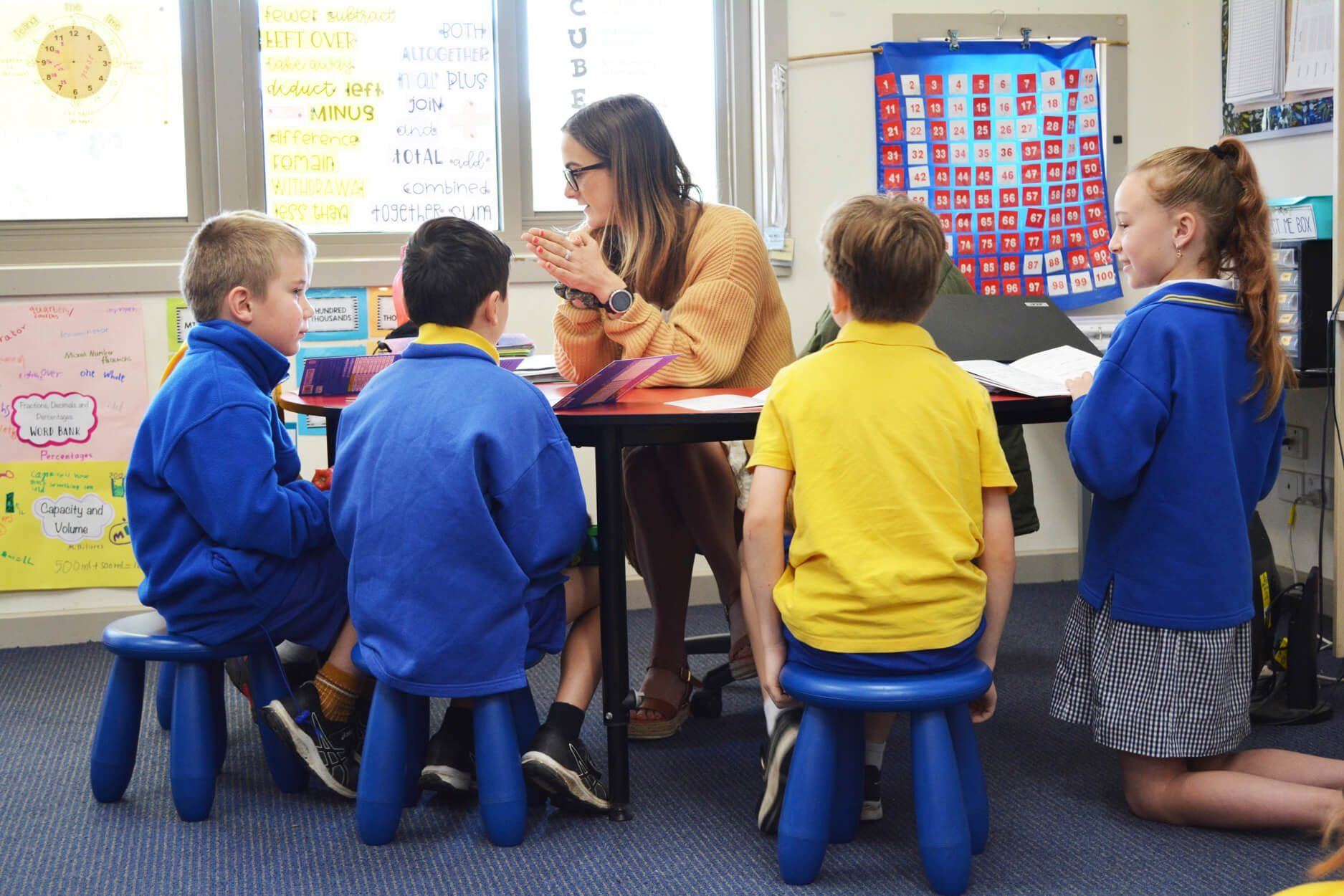Teaching and Learning
Literacy
At Woady Yaloak Primary School, our English program is based on the Victorian Curriculum areas of Reading and Viewing, Writing and Speaking and Listening.
Our school provides a highly effective English program that is based on structured, explicit teaching and assessment which is based off the FISO improvement cycle. Teacher’s assess performance and progress in student achievement, prioritise key focus areas for improvement, plan and develop improvement initiatives and implement, gather data and monitor student outcomes.
At Woady Yaloak Primary School we incorporate a variety of evidence-based approaches to ensure our students are receiving the best and most current practices in Literacy. These include:
- The Fountas and Pinnell Continuum- Reading, accuracy, fluency and comprehension.
- VCOP Writing- Writing, letter formation, punctuation, grammar, genre.
- Sounds-Write- Phonics, blending, segmenting, phoneme deletion and code knowledge.
- SALSEL (Speaking and Listening Supporting Early Literacy)- Oral language.
- Heggerty Phonemic Awareness- Rhyme, Onset, Blending, Isolating, Segmenting & Adding, Deleting, Substituting Initial Phonemes.
Numeracy
Woady Yaloak Primary School students study daily for one hour. We offer a comprehensive program, which aims to provide students with a strong grounding in skills, strategies and understandings.
Mathematics is taught through the dimensions of; Number and Algebra, Measurement and Geometry and Statistics and Probability.
Lesson content is driven by gathering student data through; formal testing, observations and the use of pre and post assessments.
Engagement is fostered by the use of “hands on” tasks and activities, games and the use of technology that take into account student ability levels and interests.
Activities are usually based on real life experiences so students can see a purpose for learning.
Specialist
L.O.T.E. - Japanese
Japanese is a curriculum area that all children at Woady Yaloak participate in for one hour a week. The children are given the opportunity to learn Japanese words and phrases by using them in various situations.
Some examples of the language studied are introducing themselves formally, asking and answering questions and giving and receiving various items. The children also participate in activities relating to the many cultural differences between Japan and Australia, as well as learning about some of the many festivals that are held in this fascinating country.
The Arts
The Arts is a curriculum area that all Woady Yaloak students enjoy participating in. Students participate in Visual Arts and Performing Arts on a rotating basis.
In Visual Arts students are encouraged and guided to be creative and imaginative as they acquire a variety of skills.
In Performing Arts students rotate between music, dance and drama. Performing Arts allows our students to be self-expressive, show their emotion and develop their confidence when performing and presenting in front of others in an encouraging environment.
At Woady Yaloak Primary School, we run bi-annual school concerts and art shows in alternating years.
Health and Physical Education
Each week, students have a one hour lesson around Health and Physical Education. This learning is focused on students enhancing their own and others’ health, safety, wellbeing and physical activity participation in varied and changing contexts.
Learning includes the acquisition of movement skills, concepts and strategies to enable students to confidently, competently and creatively participate in a range of physical activities. This curriculum area also helps them to be resilient, and to make decisions and take actions to promote their health, safety and physical activity participation.
Students are involved in athletics each year with opportunities to advance to further levels of competition. Our school is part of the Linton District School Sports Association and competes in various sports (netball, football, soccer etc.) with other local schools.
Digital Technology
At Woady Yaloak Primary School, we believe that digital technologies are an important and vital tool for each student's education. We deliver a program which is supported both in the classroom and through our dedicated specialist program.
Our Digital Technologies program includes many types of devices to engage with. Additionally, each classroom in the Junior and Middle School has access to class sets of iPads, while the Senior school uses a student based 1to1 iPad program.
Students are involved in authentic, hands on learning that aims to push their boundaries. They gain experience in:
- Digital citizenship and cyber safety
- Design and digital systems
- Data representation
- Computational thinking
Activities can be online and offline and include playing educational games, conducting research, presenting data, taking photos and videos for projects, making movies and using visual programming languages to control a device such as a robot.
Social and Emotional Learning
SWPB - School Wide Positive Behaviour
At Woady Yaloak Primary School we treat each other with respect, take responsibility for our learning and behaviour, and strive for excellence in a safe and inclusive school.
We believe at WYPS that school should be a happy and supportive learning environment which meets the needs of all students. To help create a positive school climate we have implemented the School Wide Positive Behaviour (SWPB) framework. SWPB is a whole school evidence based approach for preventing and responding to behaviour in schools. It aims to create our positive, welcoming and calm environment, while preventing and responding to behaviour.
At WYPS, we give positive feedback to students and strive to teach students how to behave appropriately and maintain our values of excellence, respect and responsibility. At WYPS, we have created matrix of behaviours that are explicitly taught to the students and are encouraged to display our values at all times. Students are acknowledged for demonstrating our school values in the classroom and playground and receive Class Dojo points, which they save up for a selection of rewards.
At WYPS we believe that students learn appropriate behaviour in the same way a child learns to read—through instruction, practise, feedback, and encouragement. Teaching behavioural expectations and rewarding students for following them is a much more positive approach than waiting for misbehaviour to occur before responding.
Social and Emotional Learning
Social and emotional learning is about building resilience and learning ways to effectively manage emotions, behaviour and relationships with others. At Woady Yaloak Primary school we believe that these are essential life skills that support the wellbeing and positive mental health of students.
At WYPS we not only integrate social and emotional learning in our daily lesson plans, we also use the Respectful Relationship program as well as Social and Emotional Wellbeing games in each and every classroom.
Respectful Relationships program
Social and emotional learning is about building resilience and learning ways to effectively manage emotions, behaviour and relationships with others. At Woady Yaloak Primary school we believe that these are essential life skills that support the wellbeing and positive mental health of students.
At WYPS we not only integrate social and emotional learning in our daily lesson plans, we also use the Respectful Relationship program as well as Social and Emotional Wellbeing games in each and every classroom.
Social and Emotional Wellbeing games
At WYPS we provide the students with multiple experiences to learn social and emotional skills. As a school we follow a sequence of hands on game sessions that provide students with an opportunity to learn and practise their social and emotional skills, with an emphasis on developing empathy within our students.
Twice a week, each class has 2x20 minute game session that allows the students to have a shared experience that promotes discussions around interaction while encouraging, empathy, respect and an appreciation of difference.
Welfare & Wellbeing
At Woady Yaloak Primary School, we treat each other with respect, take responsibility for our learning and behaviour, and strive for excellence in a safe and exclusive school.
At Woady Yaloak Primary School we:
- Have a dedicated Assistant Principal assigned for Student Welfare and Wellbeing
- Embrace opportunities to use the Program for Students with Disabilities
- Assign Educational Support staff to assist in classrooms
- Offer behaviour education through a play-based program
- Have a committed Student Voice School Improvement Team
- Monitor student wellbeing via our Sentral platform
- Implement aspects of the Respectful Relationships program
- Empower our students to share their student voice
"Our school values are Respect, Responsibility and Excellence"
WYPS Whole School Instructional Model
Instructional Models guidelines or sets of strategies on which teaching approaches are based. Effective instructional models are derived from learning theories. Learning theories describe how people learn new ideas and concepts.
Instructional models usually emphasise what the teacher is doing, not what students are doing in the classroom or what students leave the classroom capable of doing as a consequence of that instruction (DEECD, 2012: 10).
Drawing on the above sources, the Woady Yaloak Primary School (WYPS) Whole School Instructional Model has been written to have a corresponding student statement for each statement describing what the teacher is doing, i.e. a Teacher Model and a Student Model.
The WYPS Whole School Instructional Model is based on DET’s Pedagogical Model and comprises four corners or ‘leaves’ defining what high quality teaching and learning looks like at Woady Yaloak Primary School. While the model describes the nature of teaching and learning that occurs generally as a lesson progresses, i.e. phases of instruction, in practice, the leaves do not exist in isolation. Teachers will
switch between leaves in response to student needs and learning program requirements. For example, explicit teaching as described in the Direction phase, may also be required as a teacher conducts roving conferences in the Independent Practice phase.
Importantly, by having a Teacher Model and a Student Model, the WYPS Instructional Model contains components highlighting other aspects of the relationship between an instructional model and pedagogy. As Loughran (2010:37) states: Pedagogy involves two aspects of learning.
The first is associated with what and how students are learning, the second is about the teacher as a learner – learning about teaching and building expertise. Thinking about teaching in this way helps to highlight teaching as an educative process for both partners in the relationship rather than a set of technical skills.
For this reason, the WYPS Instructional Model has at its centre the instructional core of Student, Teacher and Content as researched by Elmore who writes that there are "...basically only three ways you can increase learning and performance:
- Increase the knowledge and skill of teachers
- Change the content
- Alter the relationship of the student to the teacher and the content" (Elmore, 2006b cited in DEECD, 2009:7).
Differences between an Instructional Model and Lesson Planning
An instructional model emphasises what the teacher is doing as a pedagogue; pedagogue is another name for "teacher," but one who leads people by teaching.
The noun pedagogy is used to refer to the craft of teaching – how it is that teachers lead children to learning by constructing learning experiences from a combination of curriculum, instruction and assessment. Pedagogy also refers to the study of how knowledge and skills are exchanged in an educational context by considering the interactions that take place during learning.
By comparison, a lesson plan is a detailed step-by-step guide or lesson ‘road map’ for how a teacher intends a learning experience to occur effectively during class time. It includes specific details of goals and objectives, lesson activities, teaching and learning resources and materials. While there are similarities between phases of instruction in an instructional model and steps in a lesson plan (e.g. a lesson plan includes instructional strategies), an instructional model attempts to define high quality instruction whereas a lesson plan sets out how classroom instruction takes place in much greater detail.


